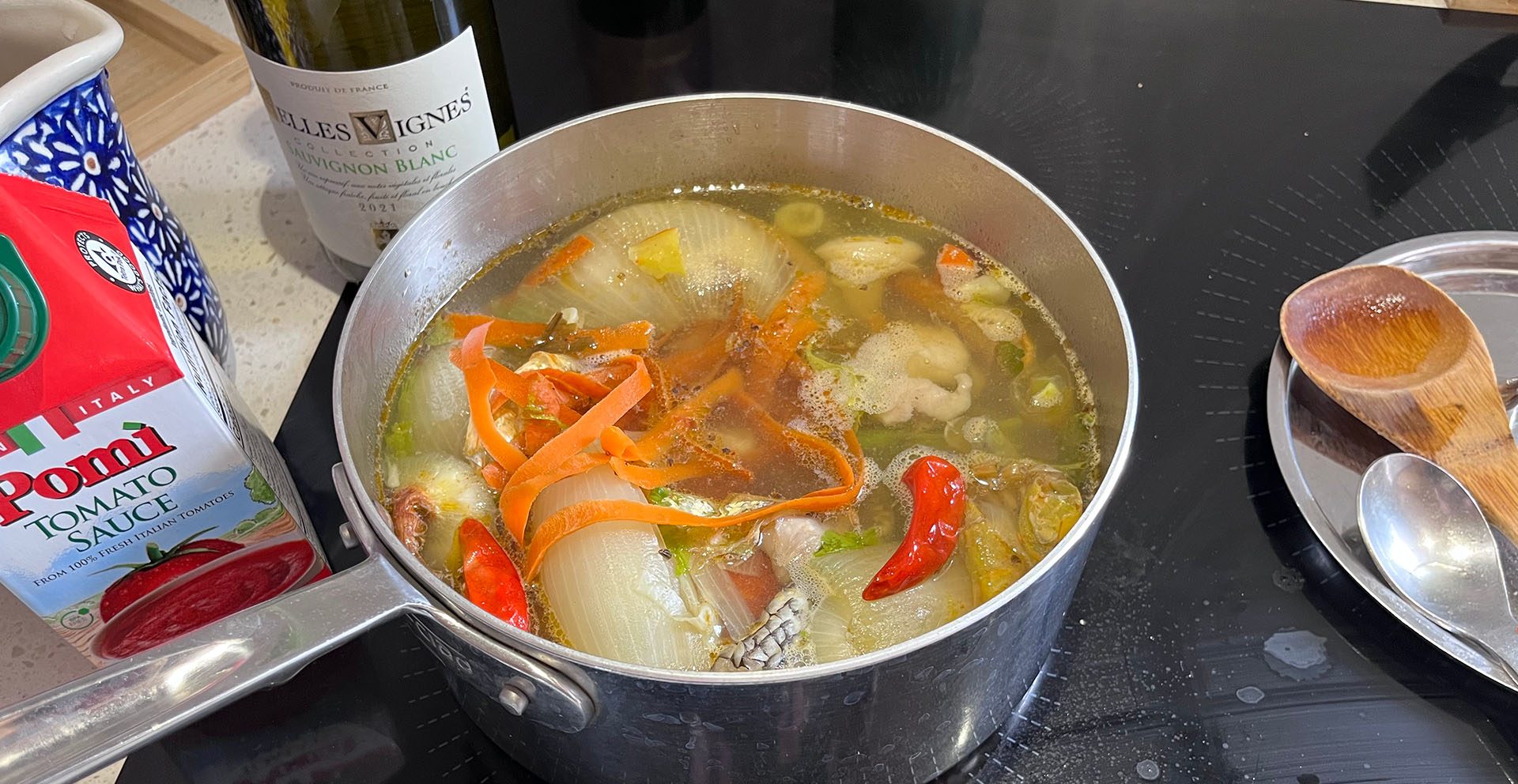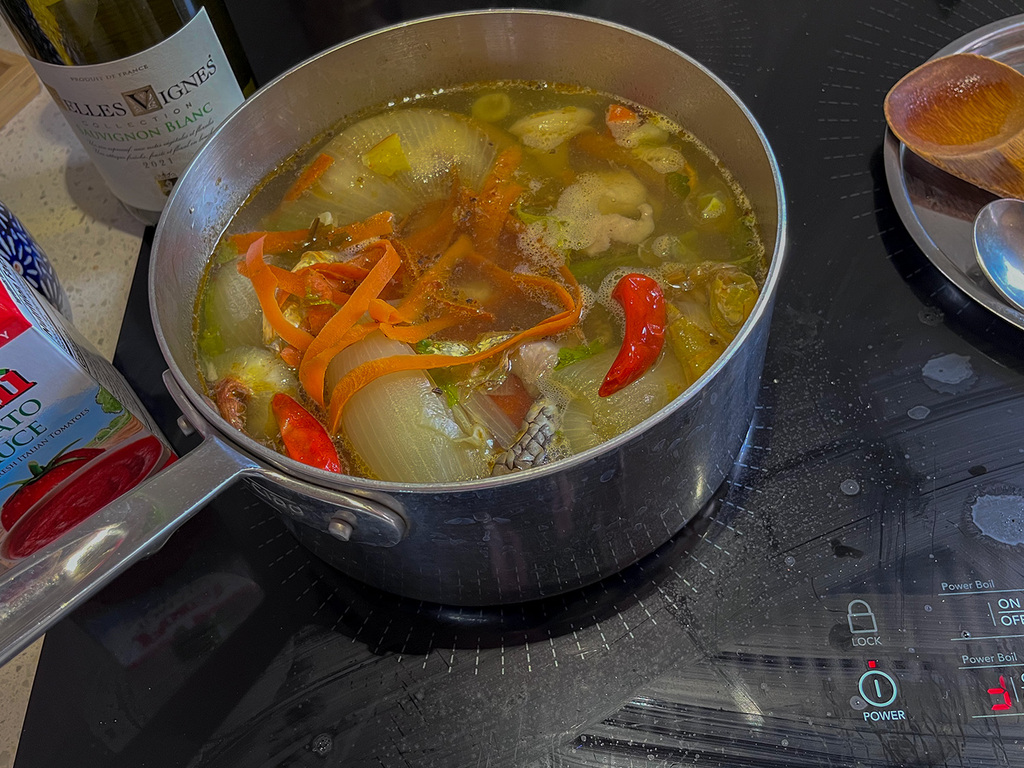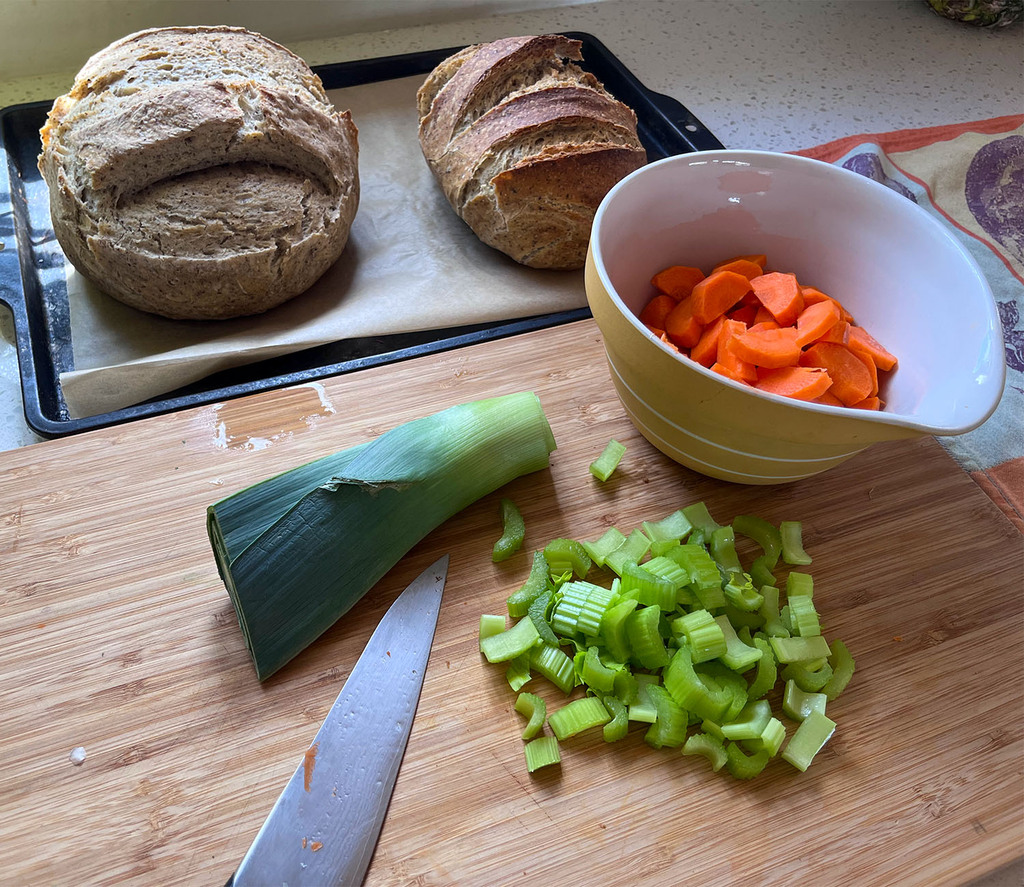For Easter 2023 we have vegetarian guests, so the main course will be a seafood stew served with fresh homemade bread. On the day before Easter, I made a fish-based stock using shrimp shells, fish skin, the outer tougher parts of onion, leeks, a dried orange and other herbs and spices. The good parts of the seafood (left after hard bits were put in the stock) were chopped to bite size pieces and marinaded in lemon and olive oil (used an oil made from olives crushed with lemons) and made sure there were no seeds in the lemon slices that I left with the fish to marinade. When the stock was flavorful, I strained it thoroughly and added the vegetables that we would actually eat in the stew, wine and tomatoes. This broth and the fish were stored separately overnight for an easy to assemble Easter dinner, perfect after a day of skiing.
Seafood Stock
- outer leaves of two onions
- 5 cloves garlic
- dried marjoram and thyme
- salt and pepper (pinch)
- red chili pods, 2
- fennel seed
- bay leaf
- dried orange, pierced
- water to cover
- skin from fish, shells off shrimp, ends of calamari
- leek, carrot and celery ends
Add to the strained stock
- 1/4 cup tomato purée
- 1/2 cup dry wine wine
- 2 carrots, chopped
- white part of a leek, chopped
- 1/2 cup celery, chopped
Seafood & Marinade
- 1 lb. unpeeled shrimp ($15, from Vietnam)
- 1/2 lb. calamari tubes ($5)
- 1/2 pound of sea bass ($13)
- 1 lb. monkfish ($10)
- 1/4 cup olive oil
- seeded slices of one lemon
Place all the stock ingredients in a medium saucepan and cover with water. Heat on medium heat – a near boil. Add shells, skin, ends of squid( or anything else that will be less than great on your soup spoon at the table) as you chop the seafood into bite size pieces. Put the chopped pieces in a coverable bowl and add lemon and olive oil. Refrigerate for 3 hours or overnight. Add the ends of the vegetables to the simmering stock as you chop them in to edible pieces. Set aside the vegetables.
After about an hour, strain the stock and return to a coverable pan and add the remaining ingredients: tomato, wine, chopped vegetables. Heat to boiling, then turn off the heat and let cool uncovered. When cool, store in fridge with seafood.
When we were fifteen minutes from the time we wanted to serve the stew, the stock and fish were combined and brought to nearly a boil. Then maintained at No. 1 (the lowest setting) on our induction stovetop.
The takeaway
The lemon flavor that the lemons and oil imparted to the fish was a taste bonus, but the sea bass fell apart quickly in the stew. Let marinading of that or any other white fish used would be a good idea. And a cheaper fish would have been just as good.


